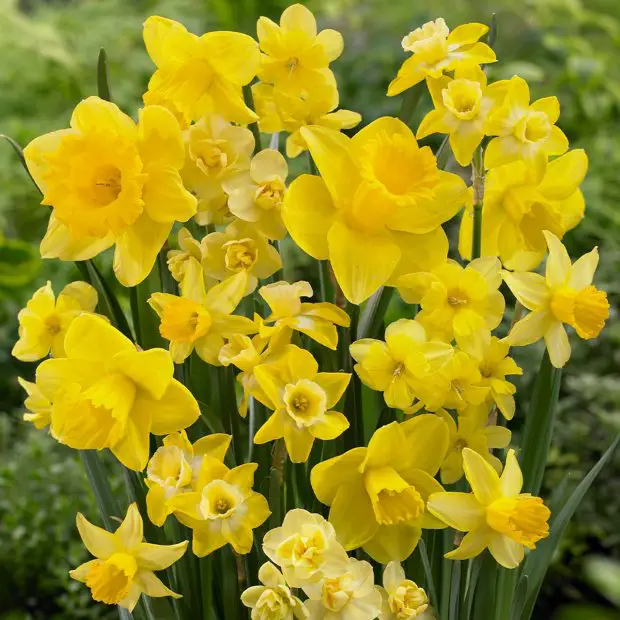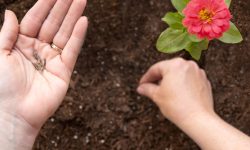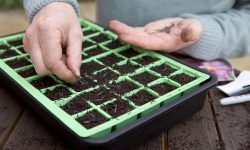Few flowers announce the arrival of spring as cheerfully as daffodils. With their golden trumpets and gentle nodding heads, these resilient blooms brighten both gardens and patios with little effort. Whether you’re new to gardening or a seasoned plant lover, planting daffodil bulbs is a simple, rewarding task that brings weeks of beauty each year.
In this guide, you’ll discover how to successfully grow daffodils in both pots and garden beds—from choosing healthy bulbs and timing your planting to providing the best care for lasting blooms. Get ready to fill your space with the joyful charm of these springtime favorites.
Understanding the Nature of Daffodil Bulbs

Daffodil bulbs are perennial, hardy underground storage organs that contain all the energy and structures needed to produce leaves, flowers, and roots. Unlike seeds, bulbs offer a jump-start to plant growth, allowing daffodils to emerge quickly when conditions are right. Each bulb consists of layers called scales, which store nutrients, and a basal plate at the bottom, from which roots develop.
Daffodils typically go through three key phases in their life cycle: dormancy, growth, and flowering. During dormancy (usually in summer), the bulbs rest beneath the soil, storing energy for the next growing season. As temperatures drop and moisture increases in fall and winter, the bulbs begin root development, followed by shoots and blooms in early spring.
Another key trait is their ability to naturalize, meaning they can multiply and return year after year with little effort, especially when planted in favorable soil and climate. Understanding these natural rhythms helps gardeners plant at the right time and provide proper aftercare to ensure vigorous, recurring blooms.
Best Time to Plant Daffodil Bulbs
The ideal time to plant daffodil bulbs is during the fall, typically from late September to early November, depending on your climate zone. The key is to plant when the soil temperature has cooled to around 55°F to 60°F (13°C to 16°C), which encourages strong root growth before winter sets in. This early root development ensures the bulbs are well-established and ready to bloom in early spring.
In cooler regions (Zones 3–5), planting should begin as early as late September to avoid frozen ground. In moderate climates (Zones 6–7), October is usually the perfect window. For warmer areas (Zones 8–10) where winters are mild, it’s often best to chill the bulbs in a refrigerator for 6–8 weeks before planting them outdoors in late November or December.
Planting too early can lead to premature sprouting, while planting too late may not give bulbs enough time to establish before cold weather. By following the natural temperature cues of your region, you set the stage for a vibrant display of daffodils that return year after year.
Choosing the Right Spot in the Garden
Selecting the right location in your garden is essential for healthy daffodil growth and long-lasting blooms. Daffodils thrive best in a spot that receives full sun to partial shade, with at least 6 hours of direct sunlight per day. Adequate sunlight helps bulbs develop strong energy reserves, leading to vibrant flowers in spring.
Good drainage is critical—daffodils are prone to rot in soggy or compacted soil. Avoid low-lying areas where water tends to collect after rain. If your garden has heavy clay soil, consider amending it with compost, sand, or peat moss to improve drainage, or plant daffodils on a gentle slope or in raised beds.
Also, choose a location with good air circulation to reduce the risk of fungal diseases. Once planted, daffodils can remain undisturbed for years, so it’s wise to pick a spot where they can naturalize and multiply without interference. Ideally, avoid areas where large trees or shrubs will eventually cast heavy shade or compete for nutrients and moisture.
Preparing Garden Soil for Planting
Proper soil preparation is the foundation for successful daffodil growth. Begin by loosening the soil to a depth of at least 12 inches using a spade or garden fork. This allows the roots to spread easily and ensures adequate drainage. Remove any rocks, weeds, or debris that could hinder bulb development.
Test the soil pH if possible—daffodils prefer slightly acidic to neutral soil, around pH 6.0 to 7.0. If your soil is too acidic, incorporate lime; if it’s too alkaline, add elemental sulfur to adjust accordingly.
To improve soil structure and fertility, work in 2 to 3 inches of organic matter, such as well-rotted compost, leaf mold, or aged manure. This enriches the soil and enhances moisture retention without waterlogging.
Avoid using high-nitrogen fertilizers at this stage. Instead, mix in a balanced bulb fertilizer (e.g., 5-10-10 or 10-10-20) directly into the soil at planting depth. This slow-release nutrient source supports strong root development and future flower formation.
Lastly, check that the soil drains well by conducting a simple percolation test: dig a small hole, fill it with water, and observe how quickly it drains. Ideally, the water should be absorbed within 30 minutes to 1 hour. If not, consider creating raised beds or adding sand or grit to improve drainage before planting.
How Deep and Spaced Should You Plant Daffodils
Planting depth and spacing play a crucial role in daffodil health, bloom quality, and longevity. A general rule of thumb is to plant bulbs at a depth of 2 to 3 times their height. For standard-sized daffodil bulbs, this means planting them 6 to 8 inches deep, measuring from the base of the bulb to the soil surface. This depth protects the bulbs from extreme temperature changes and helps support strong, upright stems.
Smaller varieties or miniatures can be planted slightly shallower—about 4 to 5 inches deep—but always ensure they are well-covered to avoid exposure during frost.
In terms of spacing, give each bulb enough room to grow and naturalize. Space standard bulbs about 4 to 6 inches apart, while smaller varieties can be spaced 3 to 4 inches apart. This allows good air circulation, reduces the risk of rot or disease, and creates a visually pleasing floral display.
For mass planting in garden beds, consider planting in loose clusters or drifts rather than in single rows. In containers, you can plant bulbs a little closer together—2 to 3 inches apart—as long as the pot has sufficient depth and drainage. Always place the pointed end facing up and firm the soil gently over the bulbs after planting.
Planting Daffodils in Pots Successfully
Daffodils thrive in containers when planted correctly, offering a flexible way to enjoy spring color on patios, balconies, or small garden spaces. To begin, choose a deep pot at least 10–12 inches tall with good drainage holes. Daffodils need sufficient room for root development and space below the bulbs to prevent water from collecting and causing rot.
Use a well-draining potting mix, ideally a blend formulated for bulbs or amended with coarse sand or perlite. Avoid heavy garden soil, as it retains too much moisture and can suffocate the bulbs.
Plant the bulbs with their pointed tips facing upward, around 6 inches deep, and space them 2–3 inches apart. You can group bulbs closer together in containers than in garden beds, but make sure they’re not touching.
After planting, water thoroughly to help settle the soil. Place the pot in a cool, dark location (like an unheated garage or shed) for 8–12 weeks to simulate the chilling period daffodils need. During this time, water lightly if the soil dries out completely.
Once shoots begin to appear, move the pot to a sunny, sheltered spot. Continue watering regularly, but avoid overwatering. When in bloom, daffodils in containers brighten any space, and once flowering ends, allow the foliage to die back naturally to recharge the bulbs for next season.
With the right care, potted daffodils will reward you with vibrant blooms year after year.
Watering After Planting
Watering daffodil bulbs properly after planting is crucial for strong root development and healthy spring blooms. Once the bulbs are in the ground or container and covered with soil, give them a deep, thorough watering to settle the soil and eliminate air pockets. This helps initiate root growth before the onset of winter.
In cooler regions where rainfall is consistent in fall and winter, additional watering may not be necessary after the initial soak. However, in drier climates or during unseasonably dry periods, you should check the soil regularly. Keep the soil slightly moist but not soggy to prevent the bulbs from rotting.
For container-planted daffodils, monitoring is more important. Containers dry out faster than garden beds, so water whenever the top 1–2 inches of soil feel dry, especially during the chilling phase and early growth.
Avoid overhead watering, which can promote fungal issues—direct watering at soil level is best. Once the bulbs sprout and leaves emerge, maintain consistent moisture to support continued growth and blooming. After flowering, gradually reduce watering as the plant enters dormancy.
Winter Considerations for Potted Daffodils
Potted daffodils are more vulnerable to winter cold than those planted in the ground because their roots are exposed to fluctuating temperatures. To protect them, it’s important to move pots to a sheltered, unheated area—such as a cold frame, garage, or enclosed porch—where temperatures remain cool but above freezing (ideally between 35–50°F or 1–10°C).
If you live in a region with harsh winters, insulate pots using straw, bubble wrap, or by clustering them together and placing mulch around the containers. This prevents root damage from deep freezes.
Ensure pots have adequate drainage to avoid waterlogged soil during wet winter months. Bulbs sitting in soggy soil are more likely to rot.
Avoid forcing the bulbs too early by keeping them in darkness during the chilling period (typically 12–16 weeks). Once green shoots appear, move them into brighter, warmer conditions to encourage blooming. Proper winter care ensures daffodils bloom reliably and vibrantly come spring.
Supporting Growth in Early Spring
As temperatures begin to rise and days grow longer, daffodil bulbs naturally break dormancy and start sending up green shoots. To support this crucial growth stage, place pots or garden beds in a sunny location where they can receive at least 6 hours of sunlight daily. Light is essential for strong stems and healthy flower development.
Begin watering more regularly, keeping the soil evenly moist but not soggy. Avoid letting the soil dry out completely, especially as the buds begin to form. Use room-temperature water to prevent shocking the young roots.
A light feeding with a balanced, slow-release fertilizer at this stage can boost energy for blooming, especially in nutrient-poor soil or container setups. Choose a formula labeled for bulbs or spring-flowering plants.
Protect emerging shoots from late frosts by covering them with garden fleece or temporarily moving potted bulbs indoors at night if a cold snap is expected. Gentle care in early spring lays the foundation for vibrant, long-lasting daffodil blooms.
Deadheading and Post-Bloom Care
After daffodils finish blooming, it’s essential to remove spent flowers promptly through deadheading. This process involves snipping off the faded flower heads just above the ovary (the small swollen base where seeds develop), without cutting the green stem or leaves. This prevents the plant from wasting energy on seed production and redirects nutrients back into the bulb.
Use clean, sharp pruning scissors or snips to avoid damaging surrounding tissue. Perform deadheading as soon as the flowers wither but before the seed pod swells. Be gentle to avoid bending or bruising nearby leaves, which are still photosynthesizing and feeding the bulb.
Post-bloom, allow the foliage to remain intact for at least 6–8 weeks, or until it yellows and dies back naturally. This period is crucial for bulb regeneration and the formation of next year’s flower buds. Do not tie or braid the leaves, as this reduces the surface area available for photosynthesis.
During this time, maintain light watering if the soil dries out, especially for potted bulbs, and optionally apply a low-nitrogen, high-potassium fertilizer to promote bulb health. After the foliage has withered completely, you may either leave the bulbs in-ground (in well-draining soil) or lift and store them in a cool, dry place if needed for climate or space management.
Proper deadheading and aftercare not only preserve bulb strength but also ensure a reliable, vigorous bloom season after season.
Storing or Replanting Bulbs
Once the foliage has died back completely, it’s time to decide whether to leave your daffodil bulbs in the ground or dig them up for storage. In regions with mild, well-drained winters, daffodil bulbs can be safely left in place for natural perennializing. However, if the soil is prone to waterlogging, or if you’re dealing with potted bulbs or dense planting, lifting and storing the bulbs is a smart choice.
To store bulbs, gently dig them up, being careful not to damage the tunic (outer skin). Brush off excess soil, then allow the bulbs to dry for 3–7 days in a warm, airy, shaded location. After curing, store them in breathable containers (like mesh bags or paper-lined boxes) in a cool (10–15°C), dark, and dry space. Check them occasionally to discard any bulbs showing signs of rot or mold.
For replanting, select only firm, healthy bulbs and plant them in early to mid-autumn. Use fresh, well-drained soil enriched with compost or bone meal, and follow correct spacing and depth guidelines for optimal regrowth. Replanting annually or biennially also gives you the chance to divide clumps, preventing overcrowding and promoting better flowering.
Proper storage and replanting techniques are key to preserving the vigor and floral performance of your daffodils, year after year.
Troubleshooting Common Problems
Even with the best care, daffodils can encounter a few challenges. One of the most common issues is lack of blooms, often caused by planting too shallow, insufficient sunlight, or cutting back foliage too early. Always allow the leaves to fully yellow and die back naturally, as this process stores energy for next season’s flowers.
If bulbs rot in the ground, poor drainage is usually to blame. Heavy, compacted soils or overwatering in containers can lead to fungal infections. Prevent this by planting in well-draining soil, spacing bulbs properly, and avoiding soggy conditions. When rot is detected, remove affected bulbs and amend the soil with compost, sand, or gravel.
Another problem is pest damage, particularly from squirrels or rodents digging up bulbs. Protect your planting area with wire mesh over the soil surface or use natural repellents. In containers, bury bulbs deeper and cover with gravel to deter digging.
Occasionally, daffodils may produce leaves but no flowers due to overcrowding or aging bulbs. In such cases, lifting and dividing bulbs every 3–5 years restores performance. Replant only the largest, healthiest bulbs for best results.
By observing early warning signs and adjusting conditions accordingly, most daffodil problems can be solved quickly—keeping your garden bright, beautiful, and resilient year after year.
Frequently Asked Questions About Plant Daffodil Bulbs in Pots
When is the best time to plant daffodil bulbs?
The ideal time to plant daffodil bulbs is in the fall, typically from late September to early November, before the ground freezes. This gives the bulbs enough time to develop roots before winter dormancy. In warmer climates, planting can be done a bit later, but bulbs may require pre-chilling.
How deep should I plant daffodil bulbs?
A good rule of thumb is to plant daffodil bulbs at a depth that is 2 to 3 times the height of the bulb—usually about 6 inches deep for standard-sized bulbs. Space them about 4 to 6 inches apart. Planting too shallow can cause poor flowering or toppling stems.
Do daffodils need full sun or partial shade?
Daffodils perform best in full sun, which encourages strong stems and vibrant blooms. However, they can also tolerate light or dappled shade, especially in warmer regions. Ensure the planting area receives at least 6 hours of sunlight daily during the growing season.
Can I grow daffodils in pots successfully?
Yes, daffodils grow well in pots if given proper care. Use well-draining potting mix, a container with drainage holes, and plant bulbs deeply enough. After planting, water well and store pots in a cool place for chilling (if needed), then move them to a bright spot once shoots appear.
What should I do with daffodils after they finish blooming?
After flowering, remove spent blooms but allow the leaves to remain until they turn yellow and die back naturally. This lets the bulbs store energy for next year’s blooms. Once foliage dies back, you can leave bulbs in the ground or lift and store them in a dry, cool place if needed.
Conclusion
Planting daffodil bulbs in pots or garden beds is a fulfilling and low-maintenance way to bring vibrant color into your spring garden. With the right soil, planting depth, and seasonal care, these bulbs will return year after year with increasing beauty. Whether you’re working with a patio container or a full backyard plot, mastering these steps ensures your daffodils thrive in any setting.






